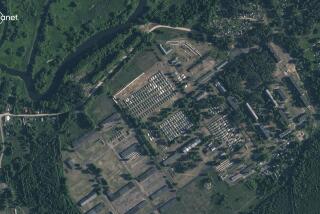Communist Secret Command Post in Yugoslav Mountains to Be Opened to Public : Yugoslav ‘Forbidden Zone’ to Be Opened
- Share via
KOCEVSKA REKA, Yugoslavia — A large area in the wooded mountains of northern Yugoslavia was a “forbidden zone” for 40 years. With the erosion of communist power, the people finally are learning why.
An underground warren was built in the mountains to protect the Communist Party elite of the Slovenian republic from any disaster, ranging from nuclear war to insurrection.
Thousands of political prisoners are said to have built the shelter in the heart of a heavily guarded 56-square-mile area 40 miles south of Ljubljana, capital of Slovenia.
On a tour organized by Slovenia’s new non-communist government, journalists were taken through police roadblocks to a mountain that has been transformed into a well-concealed maze of tunnels, galleries and shafts.
Igor Bavcar, the Slovenian interior minister, said the government in Ljubljana has been told that similar shelters were built by the other five republics. He expressed confidence that, as democracy spreads, “the veil of secrecy will be lifted from all of them.”
The 3,000-square-yard facility in Slovenia “could accommodate at least 100 people, and if the need arose, probably several hundred more,” said Marko Kadunc, an engineer employed there since 1961. He said stocks of fuel, food and water were sufficient for several months.
Slovenia and Croatia, the westernmost of Yugoslavia’s republics, are ruled by center-right parties that defeated reform Communists in the first multiparty elections since World War II.
All the other republics except the largest, Serbia, have scheduled multiparty elections and free federal elections are expected in the fall.
Soon after taking office, Slovenia’s new government formed a commission to investigate the guarded zone and determine whether political prisoners helped build it.
Well-lighted corridors wind through the mountain past dozens of bedrooms, a kitchen and conference rooms. There is a small infirmary and a fully equipped operating room.
Small, oval steel doors like submarine hatches subdivide the underground area, and entry is through a decontamination room. “This place was designed to survive a nuclear war,” said Kadunc, the engineer.
The complex was finished in the mid-1960s, used for occasional training exercises and gradually mothballed after 1978. More than 400 employees remained, to maintain the shelter and run a large cattle farm and logging operation inside the restricted zone.
An intelligence report published in June by the daily Borba in Belgrade said German prisoners of war started the work on the shelter, and Yugoslav prisoners took over after the POWs were freed in the early 1950s.
Political prisoners and captured officers of various armed groups that fought the communists in World War II blasted the tunnels in the mountain, the report said.
The zone is just a few miles from Kocevski Rog, a mountain where up to 15,000 anti-communist fighters who surrendered were executed when the war ended in 1945.
More to Read
Sign up for Essential California
The most important California stories and recommendations in your inbox every morning.
You may occasionally receive promotional content from the Los Angeles Times.











